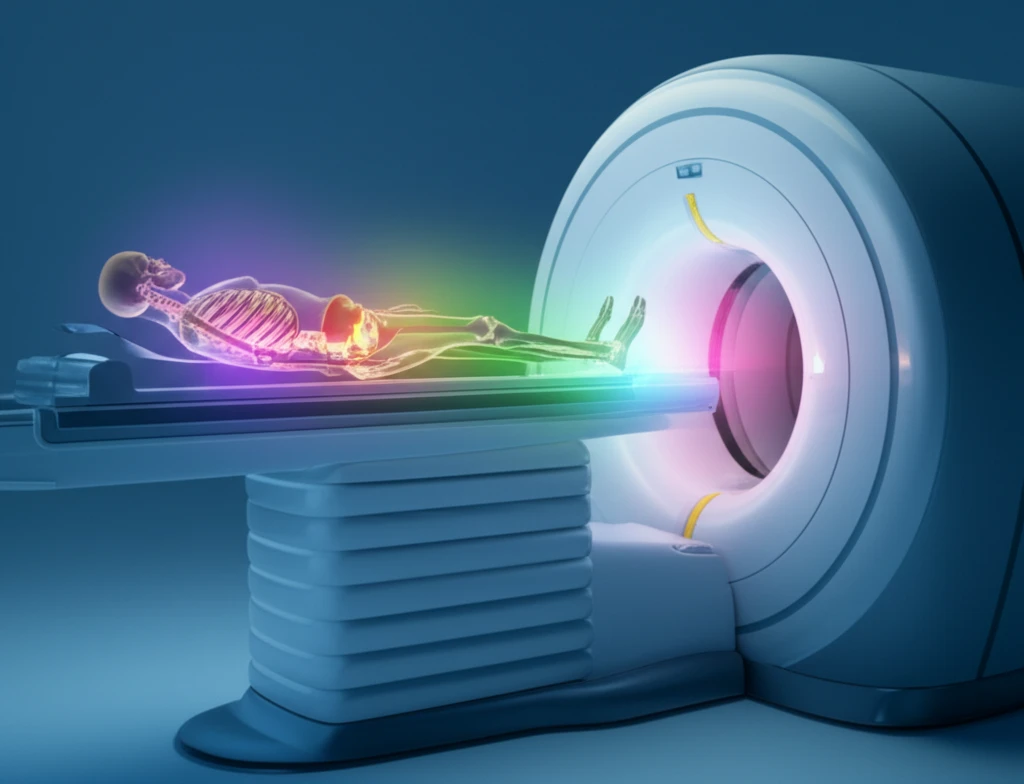
Multiple Myeloma: How PET/CT Scans are Revolutionizing Diagnosis and Care
"Discover how Positron Emission Tomography (PET) combined with Computed Tomography (CT) is transforming the landscape of multiple myeloma management, offering new hope for early detection and personalized treatment strategies."
In the ongoing battle against multiple myeloma (MM), a cancer of plasma cells, new imaging techniques are providing revolutionary advancements in how the disease is diagnosed and managed. Historically, the assessment of bone disease in MM, a critical factor in determining the disease's severity and progression, relied on conventional radiology. However, the introduction of Positron Emission Tomography (PET) combined with Computed Tomography (CT), known as PET/CT, has significantly altered the landscape. This advanced imaging technique offers a more sensitive and comprehensive approach to detecting bone lesions and assessing the extent of the disease.
The importance of accurate and early detection of bone disease in MM cannot be overstated. The presence and severity of bone lesions are key criteria in defining active or symptomatic MM, influencing treatment decisions and overall patient management. PET/CT imaging provides a functional view of the body, highlighting areas of increased metabolic activity, which can indicate the presence of cancerous cells even before they are visible on traditional X-rays. This capability is particularly valuable in identifying unsuspected disease sites, both within the bones and in extra-medullary locations, offering a more complete picture of the disease burden.
This article delves into the transformative role of PET/CT scans in multiple myeloma, examining how this technology is enhancing diagnostic accuracy, improving risk stratification, and guiding treatment strategies. We will explore how PET/CT is being used to refine the criteria for diagnosing MM, assess treatment response, and predict patient outcomes, ultimately contributing to more personalized and effective care for individuals living with this challenging disease.
Why PET/CT is a Game-Changer in Multiple Myeloma

PET/CT's superiority over traditional methods lies in its ability to provide both anatomical and functional information. While CT scans excel at visualizing the structural details of bones, PET scans detect metabolic activity, revealing areas where cancer cells are actively growing. By integrating these two technologies, PET/CT offers a comprehensive assessment of bone disease, identifying lesions that might be missed by conventional radiology.
- Enhanced Sensitivity: PET/CT detects metabolically active lesions that may not be visible on X-rays.
- Comprehensive Assessment: Combines anatomical and functional information for a complete picture of the disease.
- Improved Accuracy: Helps differentiate between benign and malignant bone lesions.
- Early Detection: Identifies bone disease at an earlier stage, allowing for prompt treatment.
The Future of Multiple Myeloma Care with PET/CT
While PET/CT is not a perfect imaging technique for MM, its increasing use is allowing us to better understand the behavior of MM-related bone disease and to take appropriate action at the right time, thus contributing to improve the care of our patients. As we continue to unravel the full potential of PET/CT, we can expect even more refined diagnostic and treatment strategies, ultimately improving the lives of individuals affected by multiple myeloma.
